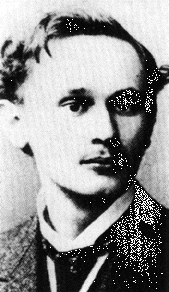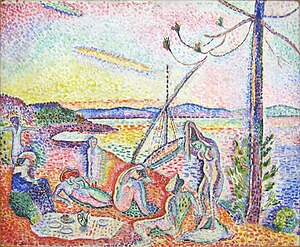"A roaring automobile that seems to run on shrapnel is more beautiful than the Victory of Samothrace"
FILIPPO MARINETTI, FIRST FUTURIST MANIFESTO, 1909
 |
| Filippo Marinetti (1876-1944) |
Futurism was announced in the world in no uncertain terms by the Italian poet and propagandist Filippo Tommaso Marinetti:
"It is from Italy that we now establish Futurism with this manifesto of overwhelming and burning violence, because we want to free this country from its fetid gangrene of professors, archaeologists, antiquarians and rhetoricians."
Marinetti published Futurism in French on the front page of the Paris newspaper Le Figaro on 1909. His manifesto not only challenged the dominance of Paris as the site of aant-garde movements, it also rejected any suggestion of historical tradition in art.
"We will destroy museums and libraries, and fight against moralism, feminism and all utilitarian cowardice."
 |
|
|
 |
| Carlo Carra (1881-1966) |
Some other co-painters in this movement were :
 |
| Umberto Boccioni (1882-1916) |
 |
| Gino Severini (1883-1966) |
 |
| Dynamism of a Cyclist, Boccioni |
 |
| Gun in Action, 1915, oil on canvas, Severini |
 |
| Carlo Carra, Horse and Rider or The Red Rider, 1913 |
Although they were quick to declare their intensions, it took longer for them to resolve translating these ideas into the paintings. The works in their opening exhibition in Milan in 1911, which contained Futurist subjects rendered in largely traditional ways, were roundly criticized for their lack of self-confidence in a magazine. Morinetti, Carra and Boccioni responded simply beating up the critic, Soffici, as he sat outside a café. Despite this Soffici joined the Futurist movement in 1913. The turning point was Severini's Paris trip in 1911. Some others also visited Paris to see avant-garde moves there, and came back to Milan with lots of new ideas.
After a major exhibition in Paris in 1912, Futurist idea and art spread quickly throughout Europe, Russia and USA. In the exhibition catalogue, they defined a concept called "lines of force" which is a characteristic of Futurist work.
Boccioni used colour to create a dramatic interaction between objects and space, wwhich he termed "dynamic abstraction". Futurism was popular among other branches of art, too -sculpture, photography, film, poetry, music, architecture...
Although primarily an Italian movement, and though short-lived, Futurist theory and iconography had an important impact on the international avant-garde. Many ideas developed by the Blaue Reiter, DADA, Constructivism originated from Futurism.

















,_1913.jpg)















_when_painting._Anonymous_photograph_c.1887.jpg)











